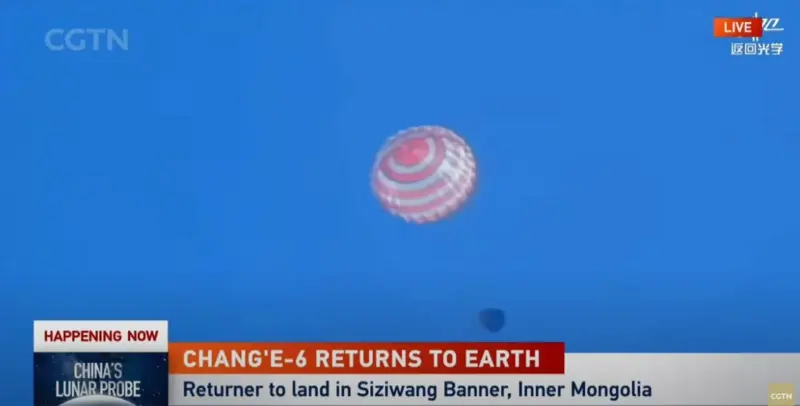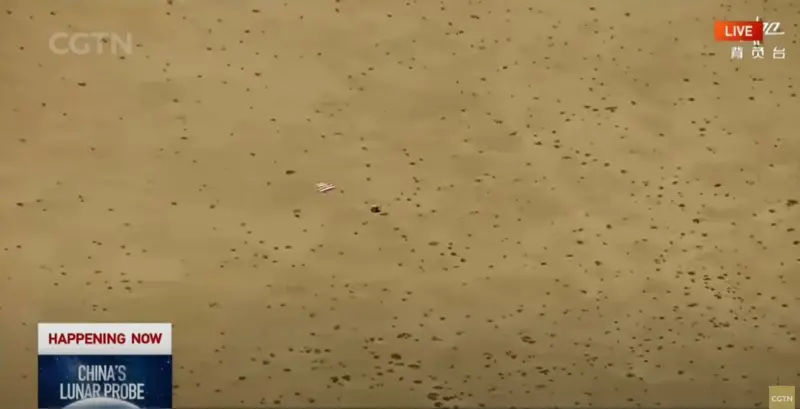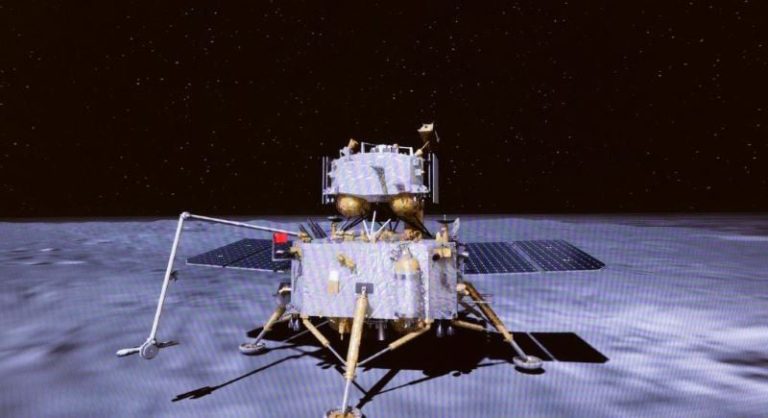China’s Chang’e-6 probe has returned to Earth with the first samples collected from the far, unexplored side of the Moon.
The module landed in the desert of Inner Mongolia, an autonomous region of China, this Tuesday (25/6), after a mission of almost two months full of risks.
Scientists have been anxiously awaiting the return of Chang’e 6, as the samples collected will be able to answer important questions about how planets are formed.
China is the only country that has ever landed on the far side of the Moon. The country accomplished the feat for the first time in 2019, on the fourth of six Chang’e lunar exploration missions (named after the lunar goddess in Chinese mythology).
The so-called hidden side — the face of the satellite that is not visible from Earth — is technically difficult to reach due to the distance and its rugged terrain, with giant craters and few flat surfaces.
Scientists are interested in this less explored side, as it is expected that it may contain traces of ice, which could be used to obtain water, oxygen and hydrogen to be used possibly in the future in creating a base for exploration of other celestial bodies.
The Chang’e-6 mission is a source of pride for a nation that has intensified its missions to the Moon — drawing the attention of its competitor, the USA.
State media showed images of officials flying the Chinese flag shortly after the Chang’e-6 capsule landed in the Inner Mongolian desert.
Chinese President Xi Jinping called to congratulate those at the mission’s command center.
Xi said he hopes they can continue to explore deep space and “reach a new height in revealing the mysteries of the Universe… to benefit humanity and advance the nation.”


by CGTN
The Chang’e-6 probe was launched from a space center in early May and successfully landed in a crater near the Moon’s south pole a few weeks later. The mission lasted 53 days.
The probe will be sent to Beijing, the Chinese capital, where samples will be extracted, according to state broadcaster CCTV.
This is China’s sixth mission to the Moon, and the second to the far side of the satellite.
The probe used a drill and a robotic arm to collect soil and rock samples, took some photos of the lunar surface, and planted a Chinese flag.
Beijing has invested significant resources in its space program over the past decade in an effort to catch up to the US and Russia.
The Asian country’s goal is to send a manned mission to the Moon by 2030 — and, ultimately, build a base at the lunar south pole.
The US also plans to send astronauts back to the Moon by 2026 via the Artemis 3 mission.
Analysts believe that the next space race will not be limited to putting people on the Moon — but rather determining who will be able to claim and control lunar resources.
*Additional reporting by Kelly Ng.
